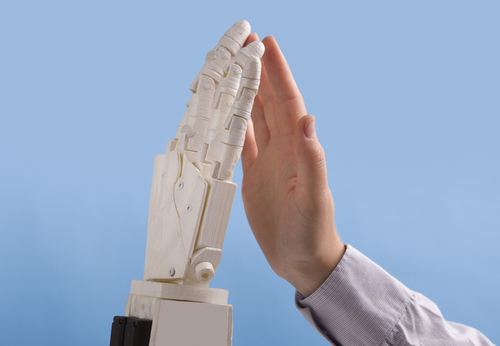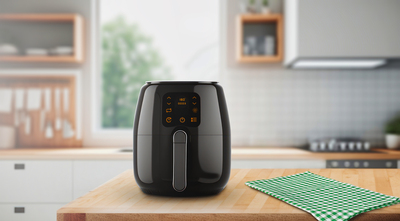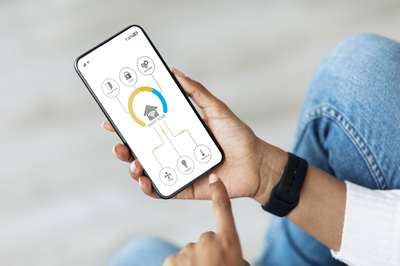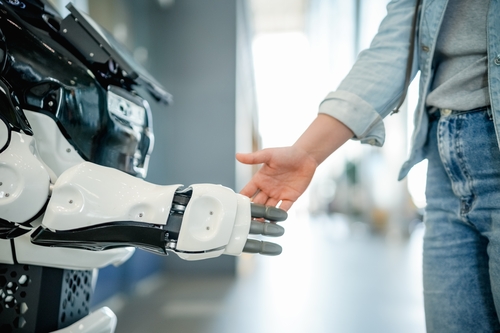

Automation vs. Human Interaction: Striking the Right Balance in the Digital Age"
Today's buzz is all about automation. You might have noticed everyone raving about ChatGPT. They're so amazed that many wonder if genuine human-authored content will soon be a thing of the past.
But here's a fun fact: Automation has been in our lives for longer than we recognize. Think about the AI suggestions that help you frame your sentences or the algorithms that customize your news. Automation is everywhere. Yet, amidst this growing dependency on tech, there's an undeniable charm in human touch.
Take this blog, for example. I began writing it with AI's help. Sure, as I type, AI suggests words, trying to predict my next move. But the choice to use that word? That's all me. It’s the human touch that crafts the narrative's heart and soul. So, while automation is great, there's nothing quite like the human touch.
Automation vs. Human Interaction: Striking the Right Balance in the Digital Age"
Today's buzz is all about automation. You might have noticed everyone raving about ChatGPT. They're so amazed that many wonder if genuine human-authored content will soon be a thing of the past.
But here's a fun fact: Automation has been in our lives for longer than we recognize. Think about the AI suggestions that help you frame your sentences or the algorithms that customize your news. Automation is everywhere. Yet, amidst this growing dependency on tech, there's an undeniable charm in human touch.
Take this blog, for example. I began writing it with AI's help. Sure, as I type, AI suggests words, trying to predict my next move. But the choice to use that word? That's all me. It’s the human touch that crafts the narrative's heart and soul. So, while automation is great, there's nothing quite like the human touch.


Defining Automation and Human Interaction
Automation: When a product or service does something by itself without you telling it to.
Human Interaction: This can be of two kinds:
1.A person from the company helps you with the service.
2.You, the user, handle or request the service directly.
In essence, while automation runs things on its own, human interaction can either be you dealing with the service directly or someone from the company assisting you.
Defining Automation and Human Interaction
Automation: When a product or service does something by itself without you telling it to.
Human Interaction: This can be of two kinds:
1.A person from the company helps you with the service.
2.You, the user, handle or request the service directly.
In essence, while automation runs things on its own, human interaction can either be you dealing with the service directly or someone from the company assisting you.
Examples of Automation and Human Interaction in Everyday Use-Cases
1.Setting an Alarm: Many still choose to set alarms manually each night for peace of mind, despite available automated options.
2.Online Shopping: Although online orders are mostly hassle-free, users often contact customer support for changes, seeking reassurance.
3.Playing Music: While voice commands offer hands-free music selection, some prefer manual selection based on convenience and comfort.
4.Driving: Cars have automated features like cruise control and lane assist. But humans still play a vital role in making intricate driving decisions.
5.Home Automation: Smart devices can manage tasks like adjusting temperatures. Yet, people still set preferences and occasionally override automated settings.
6.Healthcare: Automation helps with scheduling and reminders in healthcare. Still, the human touch remains irreplaceable for diagnosis and care.
7.Cooking: Modern appliances have programmed settings for cooking. But meal preparation and ensuring food is cooked right remains a human task.
In essence, while automation simplifies tasks, human interaction remains crucial for precision, comfort, and reassurance across various activities
Examples of Automation and Human Interaction in Everyday Use-Cases
1.Setting an Alarm: Many still choose to set alarms manually each night for peace of mind, despite available automated options.
2.Online Shopping: Although online orders are mostly hassle-free, users often contact customer support for changes, seeking reassurance.
3.Playing Music: While voice commands offer hands-free music selection, some prefer manual selection based on convenience and comfort.
4.Driving: Cars have automated features like cruise control and lane assist. But humans still play a vital role in making intricate driving decisions.
5.Home Automation: Smart devices can manage tasks like adjusting temperatures. Yet, people still set preferences and occasionally override automated settings.
6.Healthcare: Automation helps with scheduling and reminders in healthcare. Still, the human touch remains irreplaceable for diagnosis and care.
7.Cooking: Modern appliances have programmed settings for cooking. But meal preparation and ensuring food is cooked right remains a human task.
In essence, while automation simplifies tasks, human interaction remains crucial for precision, comfort, and reassurance across various activities








The Importance of Usability in Automation
When thinking about how much automation you should apply, it's vital to put your users' needs at the forefront. Here's a simplified breakdown:
1.Seek Confirmation: If users need to feel secure, don't just automate, confirm. Take online banking - users want to be sure transactions are successful. So, show them confirmations or send them receipts. It's about making them feel safe and reassured.
2.Involve Them: If you want your users to truly grasp your service, let them be part of it. Think about language apps: they use a mix of automated lessons and interactive exercises, blending videos with live interactions, making users actively participate and learn.
3.Be Adaptable: Machines are smart, but there's a human touch they can't replicate. For tasks like managing unplanned changes in a project or handling sensitive customer queries, a human touch is essential. While automation can schedule tasks or answer basic questions, sometimes you need that human insight and creativity.
4.Keep It User-Friendly: If it's hard to use, they won't use it. An automation system should be straightforward, catering to varied user habits. If it's intuitive and adaptable, it’s more likely to give users a satisfying experience.In essence, the right blend of automation depends heavily on understanding your users. By keeping it simple and smart, you ensure a more user-friendly and effective service.
The Importance of Usability in Automation
When thinking about how much automation you should apply, it's vital to put your users' needs at the forefront. Here's a simplified breakdown:
1.Seek Confirmation: If users need to feel secure, don't just automate, confirm. Take online banking - users want to be sure transactions are successful. So, show them confirmations or send them receipts. It's about making them feel safe and reassured.
2.Involve Them: If you want your users to truly grasp your service, let them be part of it. Think about language apps: they use a mix of automated lessons and interactive exercises, blending videos with live interactions, making users actively participate and learn.
3.Be Adaptable: Machines are smart, but there's a human touch they can't replicate. For tasks like managing unplanned changes in a project or handling sensitive customer queries, a human touch is essential. While automation can schedule tasks or answer basic questions, sometimes you need that human insight and creativity.
4.Keep It User-Friendly: If it's hard to use, they won't use it. An automation system should be straightforward, catering to varied user habits. If it's intuitive and adaptable, it’s more likely to give users a satisfying experience.In essence, the right blend of automation depends heavily on understanding your users. By keeping it simple and smart, you ensure a more user-friendly and effective service.


Change and the Future
As technology grows, people will expect more automation. Younger users, especially, will want more automated features but with less need for human reassurance. For success, businesses should mix automation and human touch based on what their users want. As we move forward, the way humans and machines work together will change and create exciting opportunities.
Change and the Future
As technology grows, people will expect more automation. Younger users, especially, will want more automated features but with less need for human reassurance. For success, businesses should mix automation and human touch based on what their users want. As we move forward, the way humans and machines work together will change and create exciting opportunities.
